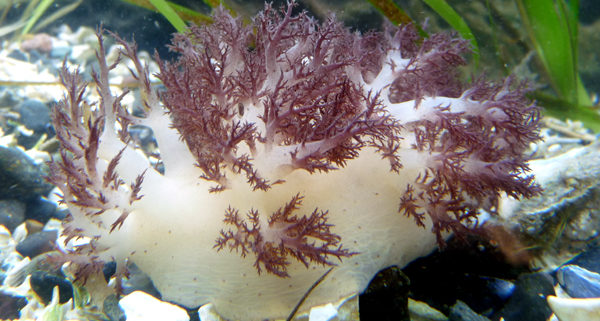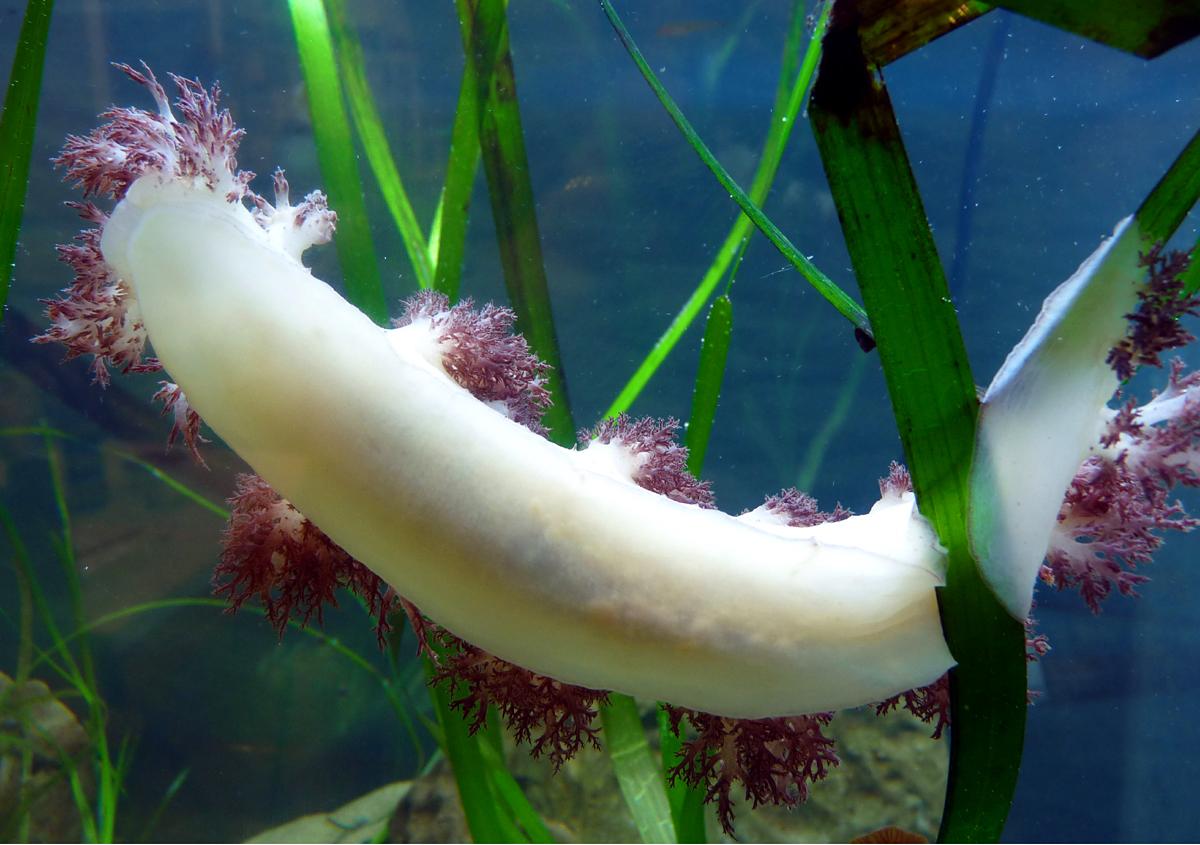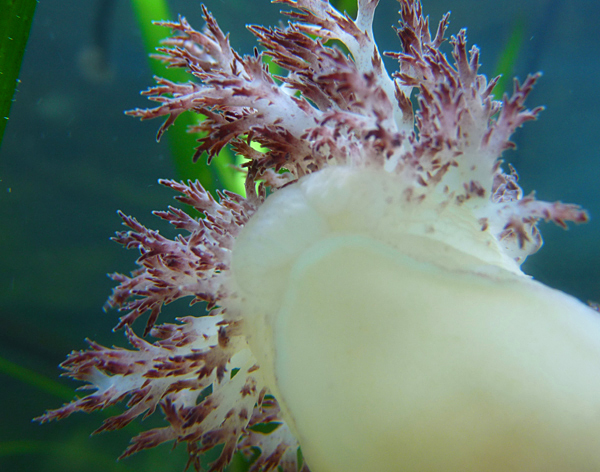Red Dendronotid By Kailey Garrett Common name: Red Dendronotid Scientific name: Dendronotus rufus Size range: up to 28 cm (11 in) Identifying Features: Dendronotus rufus have rectangular bodies with cerata that branch out at the edges. Their bodies are generally white and often have colors on the ends of the cerata. They are usually red, dark brown, or a light pink. They are sometimes known as the Giant Red Sea Slug, because of their size. Habitat: The Red Dendronotid is usually found in the South Alaskan waters down to north Washington. They are mostly found in sub-tidal waters. Prey: All known nudibranchs are carnivorous. Nudibranchs usually eat live prey such as soft corals, sea pens, and gorgonians, and will often starve to death in captivity without the appropriate foods. Predators: There is no documented information on what hunts the Red Dendronotid, but generally certain fish, turtles, sea stars, and a few species of crabs prey on these animals. Reproduction: Nudibranchs are hermaphrodites, and can mate with any member of their species. When mating, two nudibranchs come together side by side and pass sperm sacks through a tube on the right behind the head. After mating, they lay their eggs in a gelatinous spiral, near the organism that they eat. Nudibranchs can lay up to two million eggs depending on the species. Usually the eggs develop first into larvae, and then they drift down the ocean currents as plankton. Specific environmental conditions help the larvae to settle and change into the adult form. This process is extremely important because adult nudibranchs move slowly and cannot travel very long distances. References: Lamb, A. and Hanby, B. P. (2005). Marine Life of the Pacific Northwest. Madeira Park, BC: Harbour Publishing. Microcosm aquarium explorer (2008) Dendronotid Nudibranchs, retrieved December 10, 2012 http://en.microcosmaquariumexplorer.com/wiki/Dendronotid_Nudibranchs Nudibranchs, Basic Nudibranch Taxonomy, retrieved December 10, 2012. http://courses.washington.edu/mareco07/students/lisa/Lisa%20Hannon%20Nudibranch%20and%20Chiton%20Index_files/page0001.htm National geographic (June 2008) Living Color, Toxic Nudibranchs-soft, seagoing slugs-produce a brilliant defense. Retrieved December 10, 2012. http://ngm.nationalgeographic.com/2008/06/nudibranchs/holland-text/2 Wikipedia (2 August 2010, at 07:46) Nudibranch, retrieved December 10 2012 http://creationwiki.org/Nudibranchs
Interesting resources for research and photographer credit
Latest Projects
VicHigh Marine
Victoria High School
1260 Grant St.
Victoria. BC, Canada
V8T 1C2
Phone: 250-388-5456
Email: dsyoung@sd61.bc.ca







Leave a Reply
Want to join the discussion?Feel free to contribute!